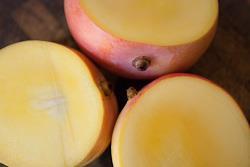
It hasn’t been a good season so far for Australia’s mango industry, and as the harvest progresses things aren’t looking any better.
A variety of poor weather conditions across production regions have conspired to turn the season into what major grower-marketer Perfection Fresh’s CEO Michael Simonetta labels a “sad story”.
“Volumes have definitely been lower so far this season, and that will continue,” he told Fruitnet.com.
Production started in Western Australia in September. While WA mangoes have seen relatively stable volumes this year, a wet October in the Ord Valley has hit post-harvest quality, prompting domestic retailers to shift to Northern Territory production.
But the Northern Territory hasn’t been without its own problems. One of the hottest winters on record translated into low fruit numbers in much of the state, although production in the important mango centre of Katherine has apparently avoided much of the damage.
“Katherine was reasonably good,” said Mr Simonetta. “I wouldn’t be surprised if they were a little bit up, but they’re the only district up on last year. All the others are substantially down.”
Later production in Queensland is looking particularly grim. Heavy rain during flowering and fruit set has turned what was initially looking like a good season into a difficult one. Later varieties like Keitt, Kent, late Kensington Pride and Perfection Fresh’s own Pearl will be particularly hard hit, said Mr Simonetta.
“There aren’t going to be many mangoes going to Asia for Chinese New Year this year, because all the late varieties out of the Atherton Tablelands are very short,” he said. “We’ll be 75 per cent down on Pearl this year, which if the first year in its history that production hasn’t increased year on year. We’re in a bit of a state of shock over that.”
On the domestic market, mangoes have been fetching better than average prices for this time of year because of the lower supply.
On the export front, that higher pricing is combining with the high Australian dollar to push Australian mangoes out of reach for some buyers. Fruit is still being exported to markets in South East Asia, the Middle East, Japan, China, and for the first time this year South Korea, but in lower volumes than in the previous season.






No comments yet